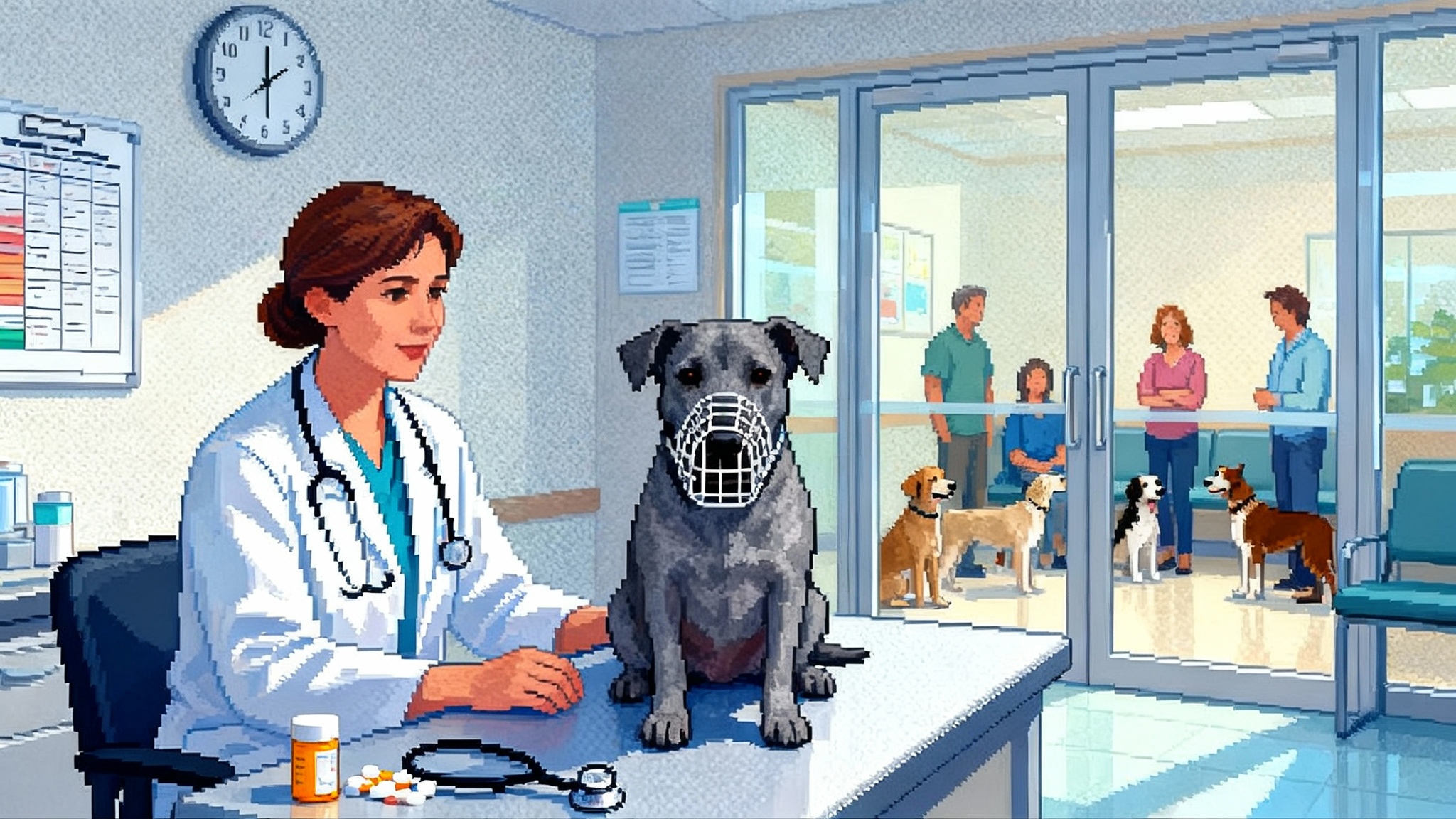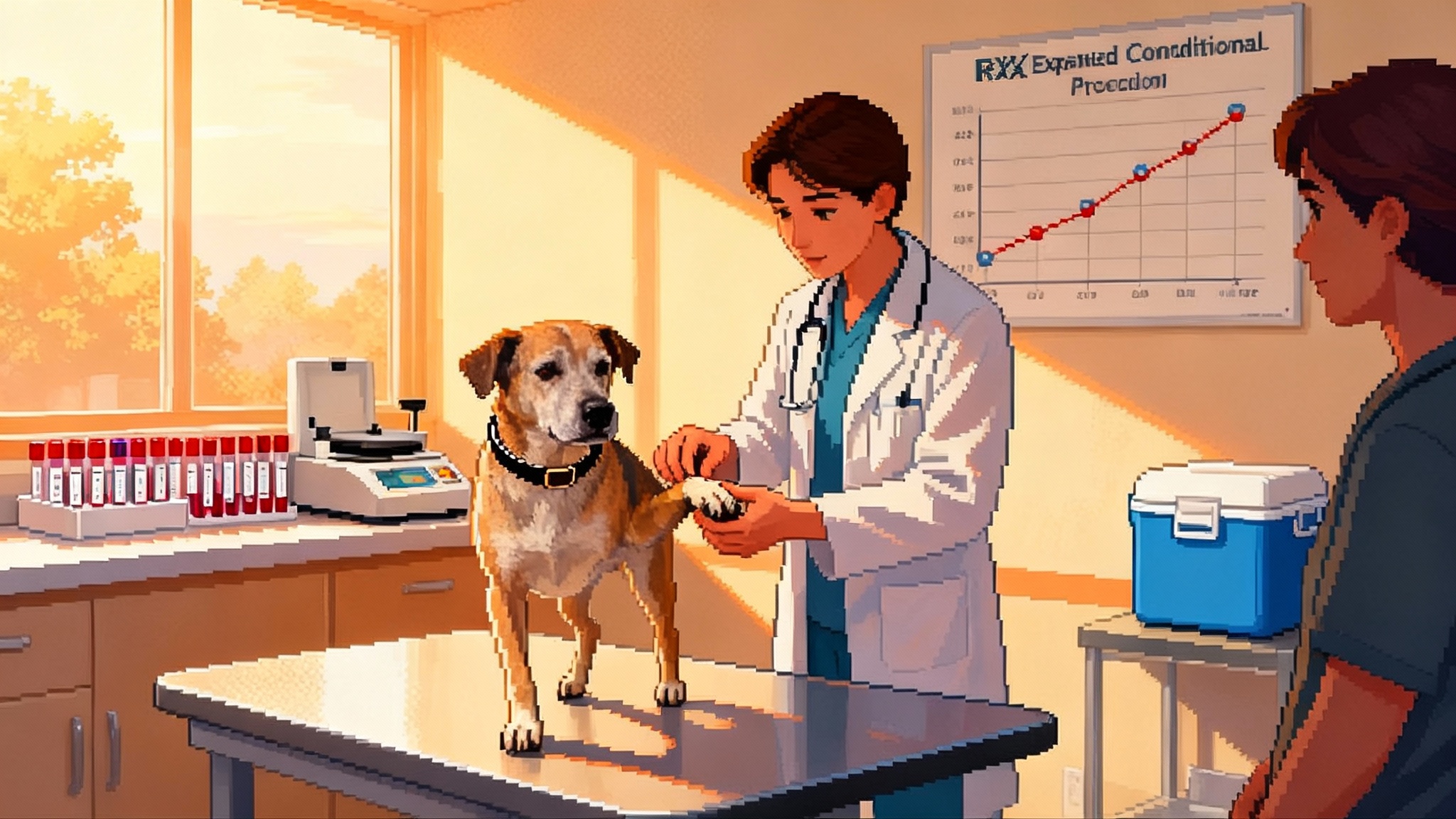Pets Lead the Longevity Revolution as FDA Backs Lifespan Drugs
A quiet milestone on February 26, 2025 signaled a loud shift in medicine. With FDA acceptance of a lifespan claim for a dog drug and the Dog Aging Project’s rapamycin trial expanding, companion animals are opening a faster path to human gerotherapies.

The moment that changed geroscience in plain sight
On February 26, 2025, a short sentence from a federal regulator did what decades of conference talks could not. Loyal announced that the Food and Drug Administration accepted a reasonable expectation of effectiveness, often shortened to RXE, for LOY-002, its daily pill intended to extend the healthy lifespan of senior dogs. In plain English, the agency agreed that the evidence package is strong enough to support a conditional path to market, provided safety and manufacturing are also judged adequate. Loyal published the milestone on its site, making this an unusually transparent look at a regulatory first for longevity drugs in any species, including ours. See the announcement: Loyal RXE for LOY-002.
RXE is not full approval. It is the gate you must pass to seek conditional approval for a veterinary drug that targets a serious and unmet need. It means the core idea, extend healthy lifespan in a defined dog population, has been accepted as an approvable claim if subsequent steps check out. That shift, from interesting science to a regulatory pathway, reframes the entire longevity field.
It also builds on earlier groundwork. Loyal previously received RXE for LOY-001, an injectable designed for large breed dogs that targets insulin-like growth factor 1 biology. Taken together, the two programs suggest lifespan is no longer treated as a fringe target in companion animals. It can be studied, labeled, and eventually prescribed if the rest of the package meets standards.
The second shoe in early 2025
Only weeks before that RXE news, the Dog Aging Project secured new federal support to scale TRIAD, its randomized, placebo-controlled test of rapamycin in companion dogs. Texas A&M University, a lead partner in the collaboration, announced a 7 million dollar grant from the National Institutes of Health to expand enrollment and add clinical sites across the United States. The goal is to power outcomes across cardiac, cognitive, and functional domains that change with age. This is not a mouse lab experiment. It is a community trial in real households with real veterinary records. Read more: NIH grant expands TRIAD.
Taken together, these developments draw a clear line. Regulators and funders have moved from if to how. That is why February 2025 will age well in retrospectives about geroscience.
Why companion animals moved first
Dogs sit in a sweet spot for aging research and regulation.
- They share our homes, diets, and environmental exposures, so results generalize better than tightly controlled lab settings.
- Their lifespans are compressed relative to ours, so trials run on practical timelines. A three to four year veterinary trial can capture survival and meaningful changes in function.
- Owners and veterinarians can consent to interventions designed to prevent decline, not just treat a diagnosed disease, which aligns with how people actually want to age.
Regulators also have a framework that fits the category. In veterinary medicine, conditional approval can allow a company to market a drug while it completes confirmatory studies, once safety, manufacturing quality, and a reasonable expectation of effectiveness have been accepted. There is no shortcut on safety, but the clock starts earlier on real-world evidence. That is ideal for a condition like aging, where hard endpoints take time.
What RXE actually means in practice
Reasonable expectation of effectiveness is a threshold standard that says the totality of data supports the plausibility of the labeled claim for the intended population. For LOY-002, that population is dogs 10 years and older that weigh at least 14 pounds. RXE allows Loyal to pursue conditional approval once two other technical sections are complete: target animal safety and chemistry, manufacturing, and controls. Those are not academic checkboxes. They are the bridge from a laboratory hypothesis to a prescription that a veterinarian can hand to an owner.
Here is the sequence that matters for readers tracking the path to real products:
-
Effectiveness package accepted as RXE. This is the scientific justification for the claim on the label, in this case extending healthy lifespan in defined senior dogs.
-
Target animal safety. The company must show the pill is safe for the intended dogs, at the intended dose and duration. That includes adverse event analysis across studies and close monitoring of organ function.
-
Manufacturing quality. The factory and the recipe have to be consistent. Chemistry must match label claims, impurities must be controlled, and the tablets must behave the same way from batch to batch.
Once those sections are complete and reviewed favorably, conditional approval can authorize marketing for a defined period while confirmatory data accumulate. Full approval later converts the entire program from provisional to permanent.
The quiet breakthrough inside the breakthrough
The biggest news is not only that a dog drug may become available. It is that regulators have accepted lifespan and healthspan as endpoints that can live on a label. That unlocks a toolkit of endpoints, biomarkers, and trial designs that translate across species.
Think of endpoints as the scoreboard. In aging, the scoreboard is not a single number. It is a composite that includes mortality, mobility, cognition, and resilience. Dogs allow us to measure all of these in ways that map to people:
- Survival and time to first major morbidity. These are the most intuitive endpoints. In household dogs, the time horizon to see differences is achievable.
- Mobility and function. Gait speed, activity counts from wearables, stair climbing, and six-minute walk tests can be standardized by breed and size, then adapted to human protocols used in geriatrics.
- Cognition and behavior. Task batteries that track attention, memory, and problem-solving can be repeated at the clinic and at home, mirroring human cognitive assessments.
- Frailty and resilience. Composite scores that blend weight change, activity, chronic disease burden, and recovery from stressors are informative in both species.
Biomarkers are the odometer under the hood. Some already show promise in dogs and people:
- Insulin-like growth factor 1 and related growth signaling that correlates with size and lifespan in dogs, echoing human observational data.
- Inflammatory cytokines and immune cell composition that shift with age and with interventions that modulate the mechanistic target of rapamycin pathway.
- Metabolomic signatures that track metabolic flexibility and mitochondrial health.
- Molecular clocks built from epigenetic marks, calibrated in dogs and then harmonized to human clocks for translational comparisons. For the big-picture effort to unify biomarkers, see our overview of the SenNet 2025 biomarker atlas.
By accepting lifespan claims in companion animals, regulators have implicitly blessed a package that blends these measures into something clinically meaningful. The template can be ported.
The design toolkit that is moving from leashes to clinics
Two design ideas are crossing over from veterinary trials to human geroscience.
-
Pragmatic trials that use the world as it is. TRIAD and company programs recruit through community veterinary clinics, integrate veterinary medical records, and fit around owner schedules. Human analogs will recruit through primary care networks, build on electronic records, and let participants live their lives during follow-up. For a clinical model that is already translating, see plasma exchange trials advance.
-
Enrichment strategies that keep trials efficient. In dogs, age, weight, and baseline health are used to enrich for events without being unfairly restrictive. In humans, similar enrichment can use validated frailty indices, simple lab tests, and activity data from wearables to concentrate statistical power without excluding large groups. Our coverage of the senolytics 2025 eye trial shows how enrichment can de-risk early efficacy reads.
From a distance, this looks like common sense. Up close, it is a disciplined response to the oldest problem in clinical research on aging, how to measure success in time frames that matter.
What to watch through 2026
The next eighteen months will determine how fast the pet-to-people flywheel spins.
-
Safety package milestones. Watch for detailed summaries of target animal safety that reflect broad and long exposure, not only short studies. Expect particular attention to metabolic parameters, organ function, and potential drug interactions common in older dogs.
-
Manufacturing and stability. A drug that targets aging will be taken for years, so batch consistency and long shelf life are not luxuries. Chemistry and control packages that show tight tolerances will be as important as the science.
-
Conditional approval decisions. LOY-002 has RXE in hand, and the company has indicated timelines to complete the remaining requirements. If conditional approval is granted as early as 2026, veterinarians could have the first labeled longevity drug for dogs in market while confirmatory data continue.
-
TRIAD enrollment and interim readouts. Scaling toward roughly 580 dogs requires new sites and smooth logistics. Early site-level summaries on adherence, safety, and functional measures will signal whether the larger trial is on track. Publicly shared metrics, even if not final, will help other teams design human trials.
-
Biomarker harmonization. Expect cross-talk between company data packages and TRIAD on blood markers, cardiac measures, and wearable activity data. The goal is not brand promotion. It is agreeing on which measures move first when an intervention works. Harmonized biomarker panels are how human trials will start small and still be informative.
-
Economics of access. Loyal has discussed accessibility goals for pricing. The veterinary channel will test whether a chronic longevity therapy can be delivered at scale without creating a new class divide. Those lessons will be watched closely by payers and employers in human health.
The fast-follow pathway from pets to people
Here is how the regulatory and clinical logic could unfold if the next steps go well.
-
Label and uptake in dogs. A conditionally approved pill that extends healthy lifespan in defined senior dogs creates real-world safety and effectiveness data in diverse households. That evidence will include survival, mobility, cognition, and quality-of-life measures.
-
Endpoint standardization. As veterinarians and companies report outcomes, a de facto standard set of endpoints will emerge for longevity claims in companion animals. Human researchers can adopt comparable measures, test them prospectively, and pre-specify composite endpoints with clarity.
-
Biomarker validation. Panels linked to clinical outcomes in dogs will become credible surrogate markers for early human studies. That lowers sample sizes and timelines in first-in-human geroscience trials.
-
Trial design transfer. The most efficient dog trial designs, such as home-based assessments combined with periodic clinic visits and electronic record integration, can be adapted to adult primary care. This reduces burden and cost without weakening data quality.
-
Regulatory conversations. Once a veterinary label exists for lifespan or healthspan, human regulators will have a practical reference point for discussions about prevention-oriented indications like delay of functional decline or reduced incidence of age-related multimorbidity in defined populations. The goal is not to import the animal rule into people. It is to translate the logic of endpoints and evidence.
Practical actions for 2025 and 2026
-
Veterinarians. Prepare protocols for patient selection, monitoring, and side effect management for senior dogs that might be candidates for a lifespan therapy. Build a simple intake checklist so your team can triage inquiries efficiently and ethically.
-
Pet owners. Keep complete veterinary records and maintain consistent baselines for weight, diet, activity, and cognition games. If a drug becomes available under conditional approval, those baselines will help your veterinarian judge whether it helps your dog.
-
Founders and scientists. Pre-register human-relevant endpoints and biomarker panels in your dog studies now. Publish your statistical analysis plans so that, later, you can point to replication without spin.
-
Health systems and payers. Start pilot registries that capture mobility, function, and resilience in older adults using wearables and clinic tests. This is not product endorsement. It is measurement infrastructure you will need later.
-
Regulators and ethicists. Convene working groups on informed consent in prevention-oriented trials and on fair access in the veterinary setting. Real decisions, like how to monitor long-term safety in diverse groups, are easier when infrastructure is in place before launch.
-
Investors. Underwrite the unglamorous pieces, manufacturing quality and data systems, not just mechanisms. The value in longevity will accrue to teams that can repeatedly deliver reliable pills and clean evidence.
A new relationship with time
A dog’s life has always been our mirror for the passage of time. Now it is also a map for how we might bend that time toward health. With RXE in hand for a pill that aims to extend healthy years in senior dogs, and with a national expansion of a government-funded rapamycin trial underway, the field has moved from promises to processes. The near future will be decided by safety packages, chemistry and manufacturing rigor, and the unglamorous work of harmonizing endpoints and biomarkers across studies.
If that work holds, the first labeled longevity therapies will enter veterinary practice, and the fastest followers will be human trials that borrow their design and their discipline. When we look back, we may say that the longevity revolution did not begin in a human hospital. It began in a clinic where a veterinarian slid a new prescription across the counter, and a family decided to buy their old friend more good years.








